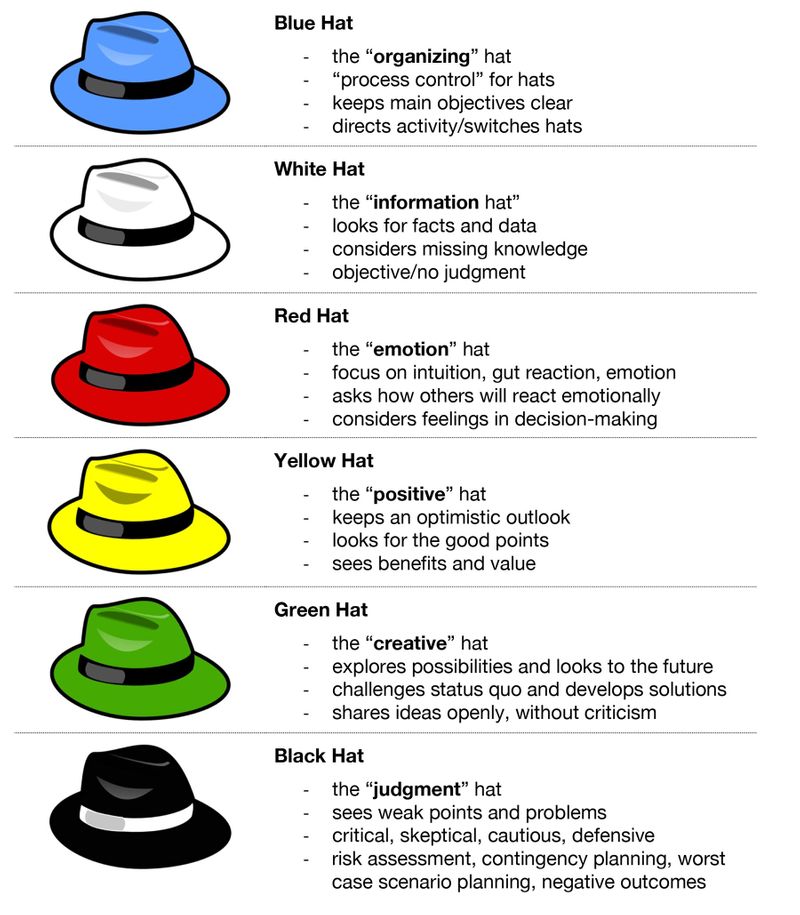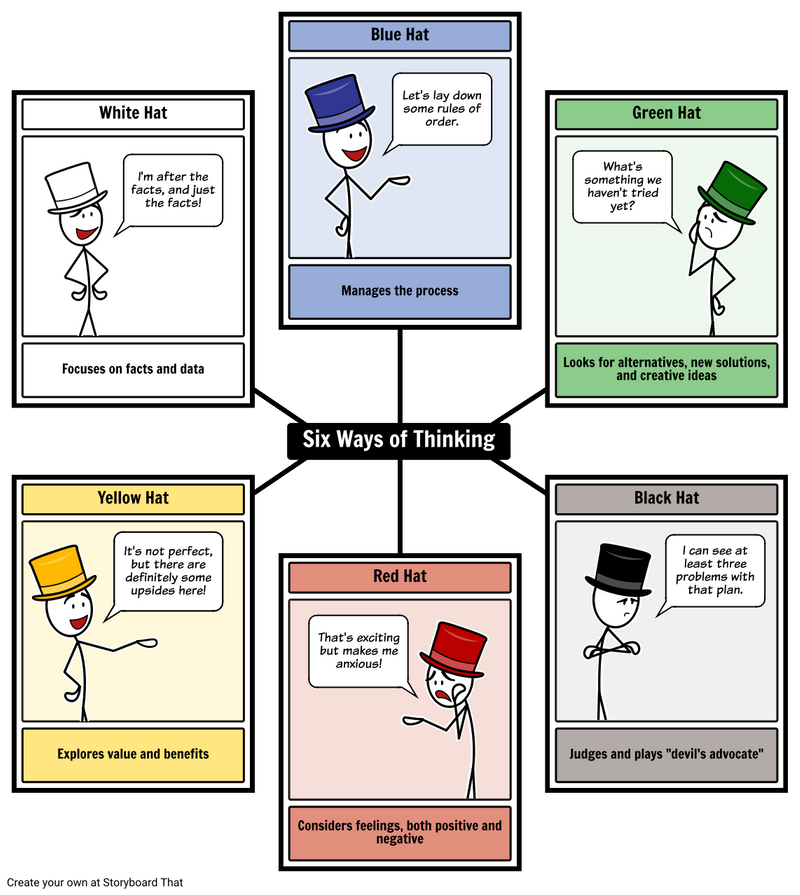Do you ever find that you are stuck in one way of thinking? Perhaps you are always optimistic. Perhaps you are always too careful. What is your first instinct?
When you think about an issue, consider another side.

Sometimes, it takes a really simple change to look at a problem in a new way.
By taking different viewpoints, we can make better decisions. Get ready to put on the Six Thinking Hats!
What is Six Thinking Hats?
The Six Thinking Hats is a technique to help you look at decisions from a number of perspectives. We can challenge the way we think!
Quiz
How can you use the Six Thinking Hats?
The different styles of thinking
Each hat focuses on a different way to think. This is a “parallel thinking process” considering all points of view.

The hats in action
Try the hats on your own, or give everyone in a group a different hat.

In groups, people agree how they will think, then they do the thinking.
Discussions begin and end with a blue hat. Each hat is used for about two minutes. It is fine to use the hats in a way that works best for you or your group.
Benefits of Six Thinking Hats
This technique helps:
see all sides of a situation
use a systematic approach
consider new or unusual angles
spot opportunities, not problems
think clearly and objectively
In meetings, the six hats help:
minimize conflicts
promote collaboration
improve meetings
generate better ideas
save time and energy
How you can use this technique

The Six Thinking Hats help with:
problem-solving
creative thinking
decision-making
team communication
project management
Summary
Work and life are full of issues, problems, decisions, and opportunities. How we look at them makes all the difference.

You can learn, practice and apply the Six Thinking Hats in any area of your life. They can help you see all sides of an issue with more focus. Each perspective helps.
The next time you are faced with a problem, reach for a different thinking hat!
Your feedback matters to us.
This Byte helped me better understand the topic.